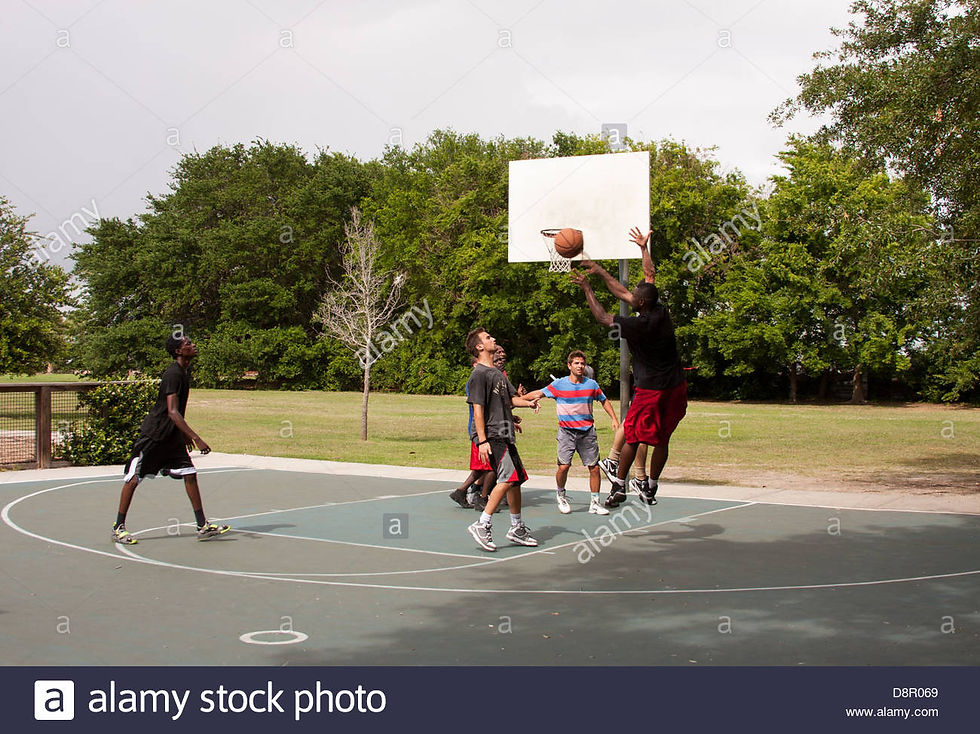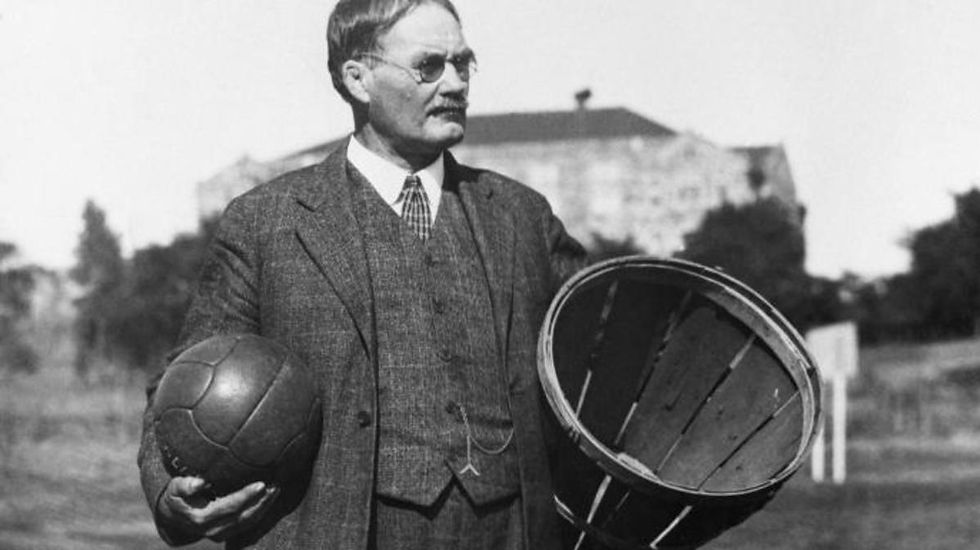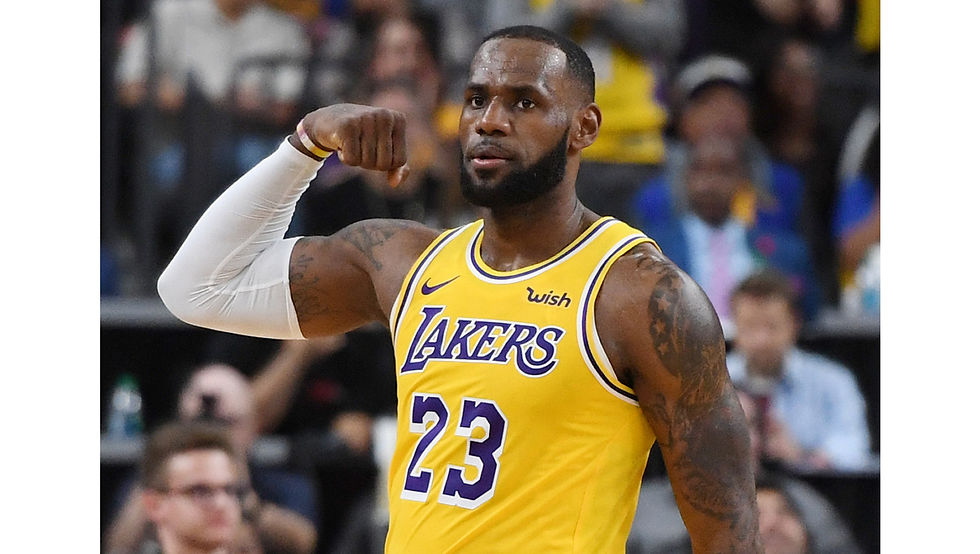Wednesday, May 20, 2020 – Invention of Basketball
- Mary Reed

- May 20, 2020
- 7 min read

When I walk around 7 p.m. in the evening, there are often some young men congregating around one of the basketball goals at George Herbert Walker Bush Elementary School which is on the connector path to Redding Trail. I am not a big college or pro basketball fan, but watching the young men play made me wonder how such a game came to be in the first place.

According to the Springfield College website, it was the winter of 1891-1892. Inside a gymnasium at Springfield College — then known as the International YMCA Training School — located in Springfield, Massachusetts, was a group of restless college students. The young men had to be there; they were required to participate in indoor activities to burn off the energy that had been building up since their football season ended. The gymnasium class offered them activities such as marching, calisthenics and apparatus work, but these were pale substitutes for the more exciting games of football and lacrosse they played in warmer seasons.

The instructor of this class was James Naismith, a 31-year-old graduate student. After graduating from Presbyterian College in Montreal with a theology degree, Naismith embraced his love of athletics and headed to Springfield to study physical education — at that time, a relatively new and unknown academic discipline — under Luther Halsey Gulick, superintendent of physical education at the college and today renowned as the father of physical education and recreation in the United States.

As Naismith, a second-year graduate student who had been named to the teaching faculty, looked at his class, his mind flashed to the summer session of 1891, when Gulick introduced a new course in the psychology of play. In class discussions, Gulick had stressed the need for a new indoor game, one “that would be interesting, easy to learn, and easy to play in the winter and by artificial light.” No one in the class had followed up on Gulick’s challenge to invent such a game. But now, faced with the end of the fall sports season and students dreading the mandatory and dull required gymnasium work, Naismith had a new motivation.
Two instructors had already tried and failed to devise activities that would interest the young men. The faculty had met to discuss what was becoming a persistent problem with the class’s unbridled energy and disinterest in required work.

During the meeting, Naismith later wrote that he had expressed his opinion that “the trouble is not with the men, but with the system that we are using.” He felt that the kind of work needed to motivate and inspire the young men he faced “should be of a recreative nature, something that would appeal to their play instincts.”
Before the end of the faculty meeting, Gulick placed the problem squarely in Naismith’s lap.
“Naismith,” he said. “I want you to take that class and see what you can do with it.”

So, Naismith went to work. His charge was to create a game that was easy to assimilate, yet complex enough to be interesting. It had to be playable indoors or on any kind of ground, and by a large number of players all at once. It should provide plenty of exercise, yet without the roughness of football, soccer, or rugby since those would threaten bruises and broken bones if played in a confined space.
Much time and thought went into this new creation. It became an adaptation of many games of its time, including American rugby (passing), English rugby (the jump ball), lacrosse (use of a goal), soccer (the shape and size of the ball), and something called duck on a rock, a game Naismith had played with his childhood friends in Bennie’s Corners, Ontario. Duck on a rock used a ball and a goal that could not be rushed. The goal could not be slammed through, thus necessitating “a goal with a horizontal opening high enough so that the ball would have to be tossed into it, rather than being thrown.”

Naismith approached the school janitor, hoping he could find two 18-inch square boxes to use as goals. The janitor came back with two peach baskets instead. Naismith then nailed them to the lower rail of the gymnasium balcony, one at each end. The height of that lower balcony rail happened to be ten feet. A man was stationed at each end of the balcony to pick the ball from the basket and put it back into play. It wasn’t until a few years later that the bottoms of those peach baskets were cut to let the ball fall loose.

Naismith then drew up the 13 original rules, which described, among other facets, the method of moving the ball and what constituted a foul. A referee was appointed. The game would be divided into two, 15-minute halves with a five-minute resting period in between. Naismith’s secretary typed up the rules and tacked them on the bulletin board. A short time later, the gym class met, and the teams were chosen with three centers, three forwards, and three guards per side. Two of the centers met at mid-court, Naismith tossed the ball, and the game of “basket ball” was born.
Word of the new game spread like wildfire. It was an instant success. A few weeks after the game was invented, students introduced the game at their own YMCAs. The rules were printed in a Springfield College magazine, which was mailed to YMCAs around the country. Because of the college’s well-represented international student body, the game of basketball was introduced to many foreign nations in a relatively short period of time. High schools and colleges began to introduce the new game, and by 1905, basketball was officially recognized as a permanent winter sport.
The rules have been tinkered with, but by-and-large, the game of “basket ball” has not changed drastically since Naismith’s original list of “Thirteen Rules” was tacked up on a bulletin board at Springfield College.

According to "Biography," by 1893, the game had become so popular that the YMCA began promoting it internationally and, in 1904, it served as a demonstration sport at the Summer Olympics in St. Louis, Missouri. By 1936, the sport became an official event at the Summer Olympics in Berlin. Naismith lived long enough to see not only these honors but also the beginnings of the National Invitation Tournament in 1938 and the NCAA Tournament in 1939.

Although his new sport was taking off, Naismith was said to have more interest in his career in physical education. After leaving the YMCA in Springfield, Massachusetts, he moved to Denver to obtain his medical degree in 1898. He then founded a basketball program at the University of Kansas, where he initiated a long lineage of prestigious basketball coaches, starting with Forrest “Phog” Allen, who would then famously coach ace players-turned coaches Adolph Rupp, Dean Smith and Ralph Miller. Naismith had a lengthy career at the University of Kansas, totaling almost four decades. In 1937, he helped form the National Association of Intercollegiate Basketball, which would later be recognized as the National Association of Intercollegiate Athletics. He received numerous sports awards during his lifetime and posthumously.

According to Wikipedia, basketball was originally played with a soccer ball. These round balls from "association football" were made, at the time, with a set of laces to close off the hole needed for inserting the inflatable bladder after the other sewn-together segments of the ball's cover had been flipped outside-in. These laces could cause bounce passes and dribbling to be unpredictable. Eventually a lace-free ball construction method was invented, and this change to the game was endorsed by Naismith. (Whereas in American football, the lace construction proved to be advantageous for gripping and remains to this day.) The first balls made specifically for basketball were brown, and it was only in the late 1950s that Tony Hinkle, searching for a ball that would be more visible to players and spectators alike, introduced the orange ball that is now in common use. Dribbling was not part of the original game except for the "bounce pass" to teammates. Passing the ball was the primary means of ball movement. Dribbling was eventually introduced but limited by the asymmetric shape of early balls. Dribbling was common by 1896, with a rule against the double dribble by 1898.

The first official game was played in the YMCA gymnasium in Albany, New York, on January 20, 1892, with nine players. The game ended at 1–0; the shot was made from 25 feet, on a court just half the size of a present-day Streetball or National Basketball Association court.
At the time, football was being played with 10 to a team — which was increased to 11. When winter weather got too icy to play football, teams were taken indoors, and it was convenient to have them split in half and play basketball with five on each side. By 1897–1898 teams of five became standard.

Women's basketball began in 1892 at Smith College when Senda Berenson, a physical education teacher, modified Naismith's rules for women. Shortly after she was hired at Smith, she went to Naismith to learn more about the game. Fascinated by the new sport and the values it could teach, she organized the first women's collegiate basketball game on March 21, 1893, when her Smith freshmen and sophomores played against one another. The NBA-backed Women's National Basketball Association began in 1997. Though it had shaky attendance figures, several marquee players (Lisa Leslie, Diana Taurasi, and Candace Parker among others) have helped the league's popularity and level of competition.

The NBA has featured many famous players, including George Mikan, the first dominating "big man"; ball-handling wizard Bob Cousy and defensive genius Bill Russell of the Boston Celtics; charismatic center Wilt Chamberlain, who originally played for the barnstorming Harlem Globetrotters; all-around stars Oscar Robertson and Jerry West; more recent big men Kareem Abdul-Jabbar, Shaquille O'Neal, Hakeem Olajuwon and Karl Malone; playmakers John Stockton, Isiah Thomas and Steve Nash; crowd-pleasing forwards Julius Erving and Charles Barkley; European stars Dirk Nowitzki, Pau Gasol and Tony Parker; more recent superstars LeBron James, Allen Iverson and Kobe Bryant; and the three players who many credit with ushering the professional game to its highest level of popularity during the 1980s and 1990s: Larry Bird, Earvin "Magic" Johnson, and Michael Jordan.



Comentarios